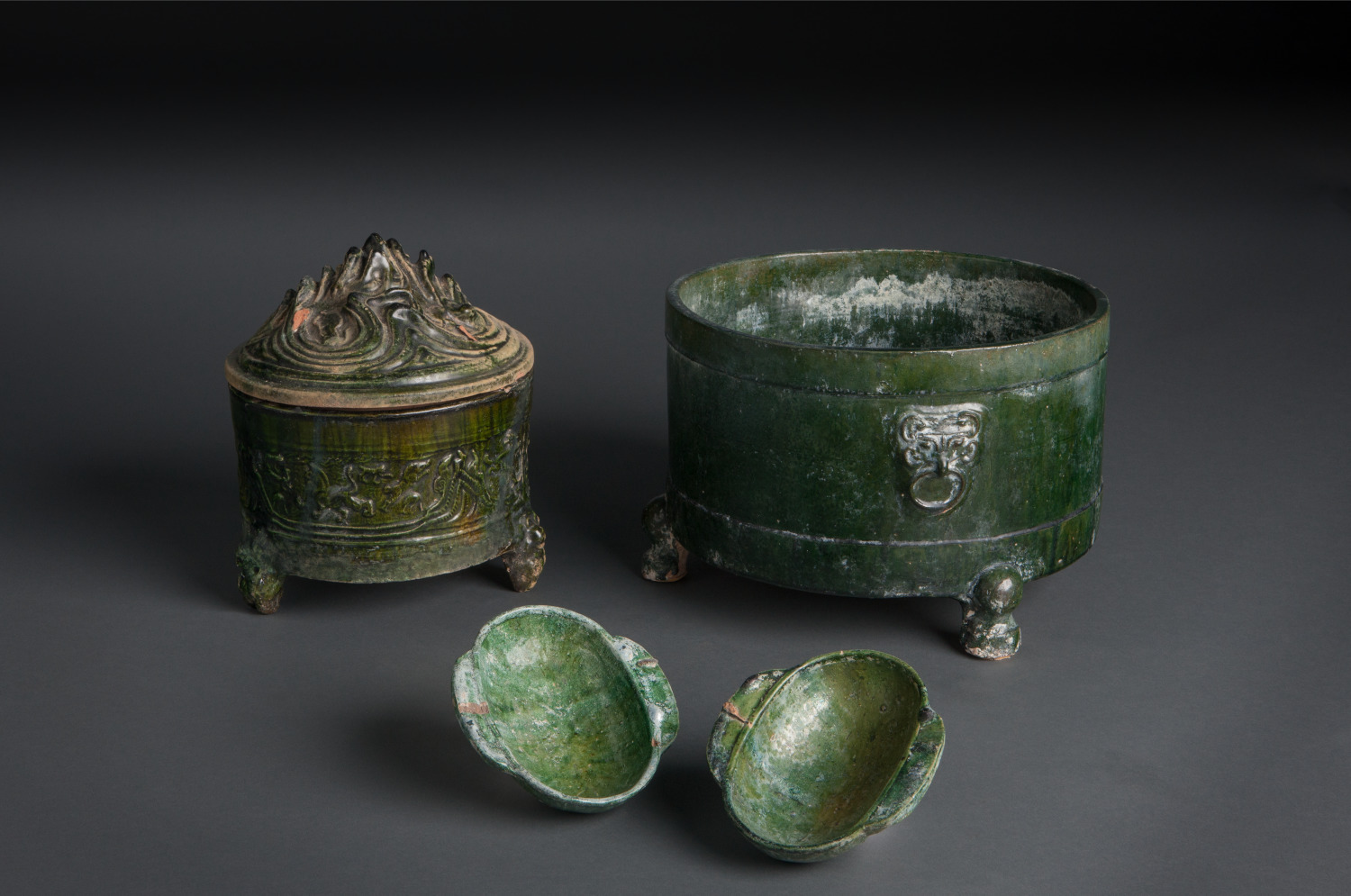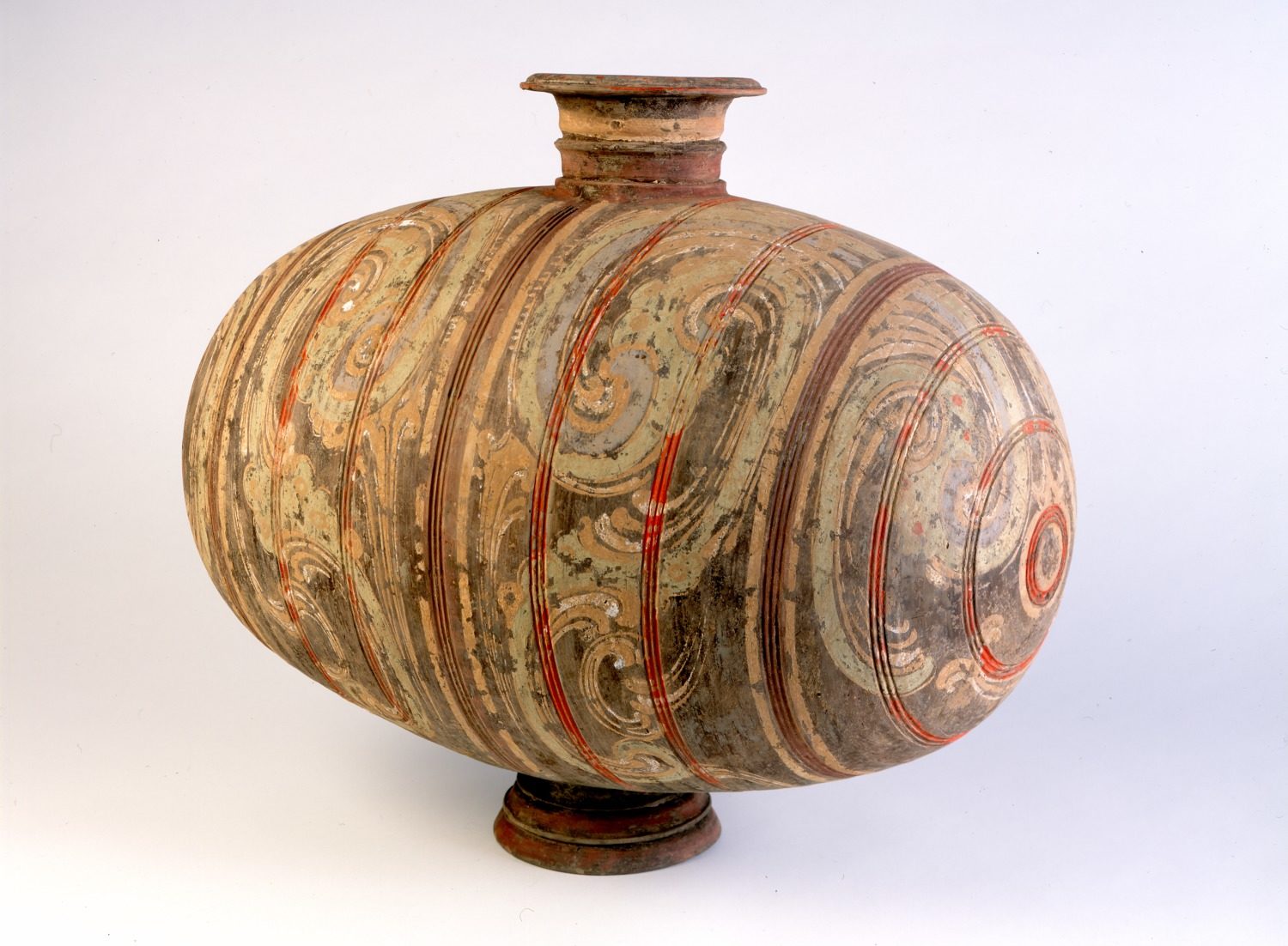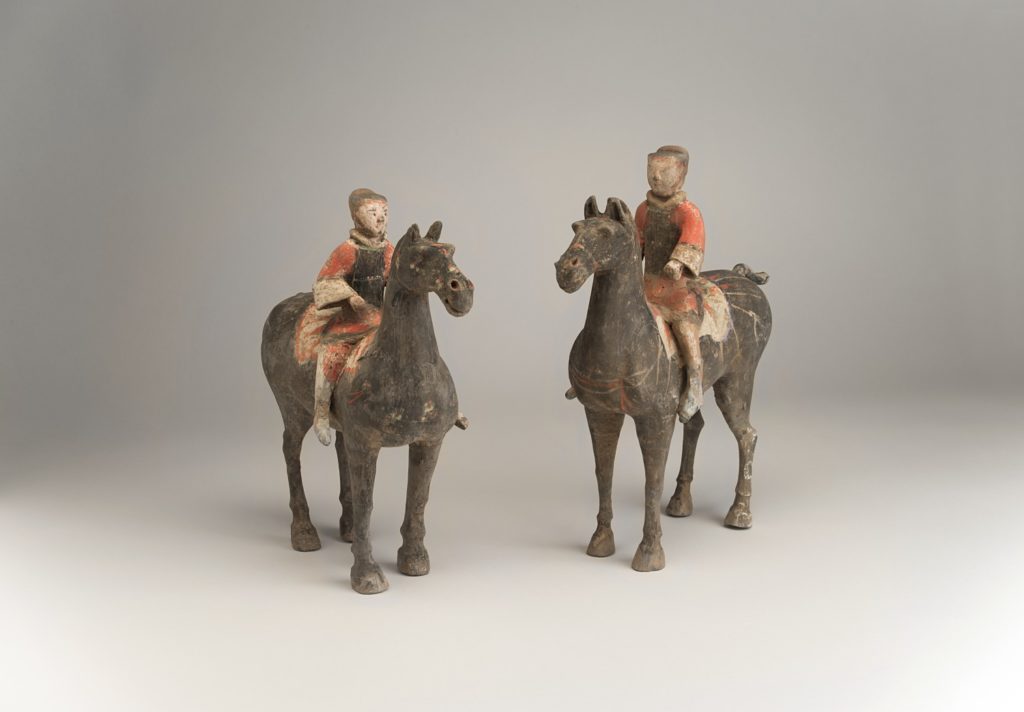Seeking Immortality: Ancient Artifacts is organized by Phoenix Art Museum. It is made possible, in part, through the generosity of the Museum’s Circles of Support and Museum Members and features objects donated to the Phoenix Art Museum collection by Gail and Stephen Rineberg, Mr. and Mrs. Andrew B. and Wankyun R. Kim, Richard J. Faletti, and Drs. Thomas and Martha Carter, and purchased with funds provided by Asian Arts Council.

ABOUT THE EXHIBITION
Across the world, the question of how to bury the deceased is an important issue. Concerns with an afterlife and immortality have resulted in troves of artifacts that verify some of these beliefs in other times and places.
In Asia, deliberate mummification did not occur. The deceased were interred in tombs that reflected their status in this life and provided them with all that they might need in the next life, including protection from malevolent spirits. Some objects were used every day, whereas others were created specifically for burial. Often, pottery figures were substitutes for the burial of living servants and animals.
IMAGE CREDIT
Unknown, Hill censer jar (Vasija para incienco), Han dynasty, 206 B.C.-220 A.D. Glazed stoneware. Gift of Drs. Thomas and Martha Carter.

Seeking Immortality: Ancient Artifacts features objects from China, Japan, and Korea meant to accompany the dead into the afterlife. With ceramic replicas of servants and animals, figures meant to provide protection from harm, and more, this special installation explores how archaeology continues to reveal material culture that offers insight into what life and technology were like in ancient times.
IMAGE CREDIT
Unknown, Cocoon-shaped pottery jar (Vasija de cerámica en forma de capullo), Western Han dynasty, 1st century B.C.-26 A.D. Ceramic with pigments. Gift of Richard J. Faletti.
EXHIBITION SPONSORS
FEATURED WORKS IN THE COLLECTION
Cocoon-shaped pottery jar (Vasija de cerámica en forma de capullo)
Unknown, China, Western Han dynasty, 1st century B.C.-26 A.D., jar, ceramic with pigments, Gift of Richard J. Faletti
MoreChicken headed ewer (he) (Aguamanil con cabeza de pollo)
Unknown, China, Zhou dynasty, ewer, ash-glazed ceramic, Gift of Gail and Stephen Rineberg in honor of the Museum's 50th anniversary
MoreHill censer jar (Vasija para incienco)
Unknown, China, Han dynasty, 206 B.C.-220 A.D., jar, glazed stoneware, Gift of Drs. Thomas and Martha Carter
More
Featuring more than 20,000 objects, the collection spans the globe, bringing the world to our city, and our city to the world.

Discover a world of programs, workshops, and more, and experience your museum in a whole new way.
EXHIBITIONS
On view for a limited time, exhibitions present art from across the centuries and the globe, from iconic fashion to Old Master paintings, contemporary photography to historical objects of Asia.
MORECOLLECTIONS
Featuring more than 20,000 objects, the collection spans the globe, bringing the world to our city, and our city to the world.
MORE


